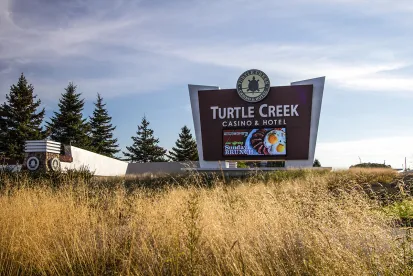A recent change to the U.S. Economic Development Administration’s (EDA) regulations that expands eligibility for EDA grants to certain for-profit Tribal entities will provide Native American communities greater access to EDA funds. Specifically, these entities will have access to the $3 billion in federal funding that was made available to the EDA through the American Rescue Plan Act—$100 million of which is specifically allocated for Indigenous communities, “to prevent, prepare for, and respond to coronavirus and for necessary expenses for responding to economic injury as a result of coronavirus.”
The Public Works and Economic Development Act of 1965 (Pub. L. No. 89-136, 79 Stat. 552) (PWEDA) established the EDA within the U.S. Department of Commerce in order to “provide grants for public works and development facilities, other financial assistance and the planning and coordination needed to alleviate conditions of substantial and persistent unemployment and underemployment in economically distressed areas and regions.” The EDA is the only federal agency solely focused on economic development, and its mission is “[t]o lead the federal economic development agenda by promoting innovation and competitiveness, preparing American regions for growth and success in the worldwide economy.” The PWEDA declares “Indian tribes” to be eligible for EDA grants and defines “Indian tribes” to mean “any Indian tribe, band, nation, pueblo, or other organized group or community, including any Alaska Native village or Regional Corporation (as defined in or established under the Alaska Native Claims Settlement Act (43 U.S.C. 1601 et seq.)), that is recognized as eligible for the special programs and services provided by the United States to Indians because of their status as Indians.” The PWEDA also specifically authorizes Indian Tribes as eligible for 100% grant rates under EDA’s grant programs.
However, although such restriction is not contained within the PWEDA, EDA’s regulations historically limited the types of organizations included within the definition of “Indian Tribe” to Tribal non-profit organizations. For more than 45 years, previous iterations of EDA’s regulations defined “Indian Tribe” to be “an entity on the list of recognized tribes published pursuant to the Federally Recognized Indian Tribe List Act of 1994 . . ., and any Alaska Native Village or Regional Corporation (as defined in or established under the Alaska Native Claims Settlement Act,” and interpreted the term to “include[] the governing body of an Indian Tribe, non-profit Indian corporation (restricted to Indians), Indian authority, or other non-profit Indian tribal organization or entity; provided that the Indian tribal organization or entity is wholly owned by, and established for the benefit of, the Indian Tribe or Alaska Native Village.”
Despite the fact that Native communities are among the most economically distressed in the country, the EDA reports that it has seen a stagnation in funding to Tribal communities. At the same time, the agency has experienced an increase in EDA grant applications from for-profit Tribal entities, which were barred from receiving EDA grants by regulation. In response, the EDA identified steps that could increase the flow of EDA funding to Tribal communities, including expanding Tribal eligibility for EDA grant funding to for-profit Tribal entities.
On September 24, 2021, following government-to-government consultations between the EDA and Tribal representatives in April 2021, the EDA published a final rule updating its regulations to extend EDA Tribal eligibility to include for-profit entities that are wholly owned by and established exclusively for the benefit of a Tribe. 86 Fed. Reg. 52,957. EDA grant eligibility will not be limited to any particular type of entity, as long as that entity is wholly owned by a Tribe and organized for the benefit of the Tribe; accordingly, Indian corporations, Section 17 corporations, state-chartered corporations, and limited liability corporations are all potentially eligible.
In the final rule, the EDA notes that there is no background information as to why the “non-profit” limitation was previously included in the definition of Indian Tribe. The EDA acknowledges that Tribal corporations are distinct from other types of “for-profit” entities—particularly because they are often tasked with creating economic development for Tribal communities—and are crucial to furthering the long-term economic development of American Indian Nations (AIN). The final rule suggests that expanding EDA eligibility to Tribally owned for-profit businesses would also promote job growth, as these businesses are often major employers within their Tribal communities.
Though the new rule greatly broadens the scope of the types of Tribal businesses eligible for EDA funding, it does contain an important restriction. Although Tribal for-profit entities may generally have non-Indian business partners, the EDA notes in the final rule that a for-profit entity will only be eligible for EDA Tribal funding if it is wholly owned and managed by the Tribe. This restriction is meant to ensure that EDA investments benefit the Tribe.
Also of note, the new rule does not directly extend eligibility to Alaska Native corporations. However, in the final rule, EDA noted that it had determined, following the Supreme Court’s Yellen v. Confederated Tribes of the Chehalis Reservation decision in June 2021, that the definition of Indian Tribe itself is inclusive of Alaska Native corporations.
The timing of the regulatory change is auspicious considering that it will expand Native communities’ access to funds made available to the EDA under the American Rescue Plan Act of 2021. On March 11, 2021, Congress passed the American Rescue Plan of 2021, which appropriated an additional $3 billion to the EDA “to prevent, prepare for, and respond to coronavirus and for necessary expenses for responding to economic injury as a result of coronavirus.” In July, U.S. Commerce Secretary Gina M. Raimondo announced that the EDA would create a series of six programs—known as “Investing in America’s Communities”—in order to distribute the $3 billion in funding made available to EDA through the American Rescue Plan Act. Within these programs, the EDA allocated $100 million to the Indigenous Communities Challenge in order to support the needs of Tribal governments and Indigenous communities, which were disproportionately impacted by the COVID-19 pandemic.
This crucial change to the EDA’s definition of Indian Tribe making certain Tribally-owned for-profit entities eligible for EDA assistance should lead to more COVID relief flowing to Native American communities in the short term and broad economic development opportunities for Native communities in the long term.




 />i
/>i
